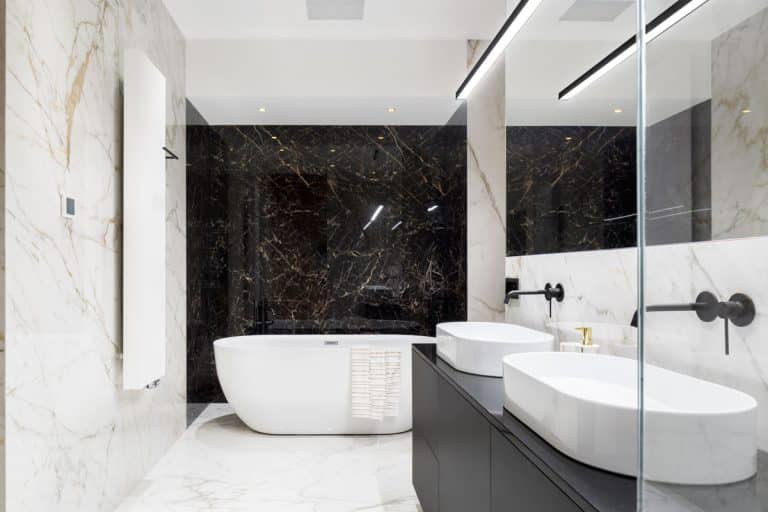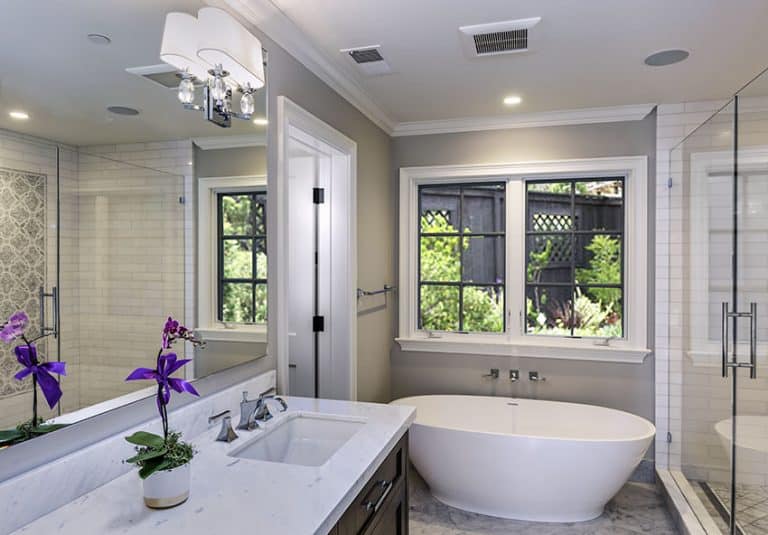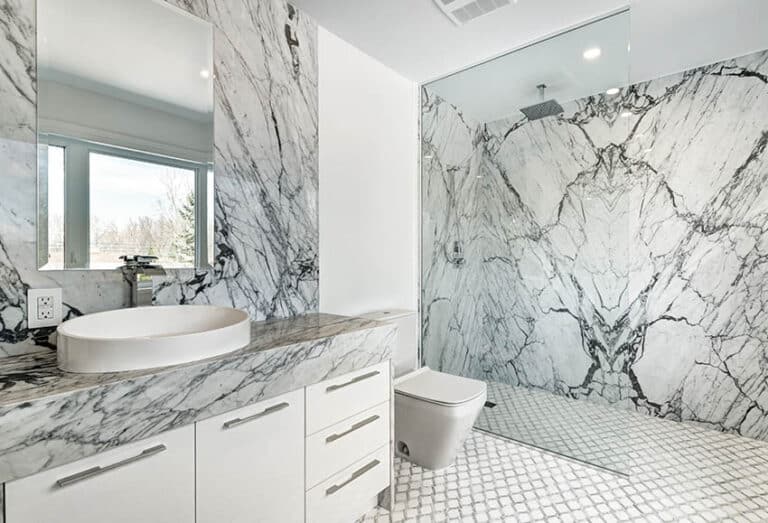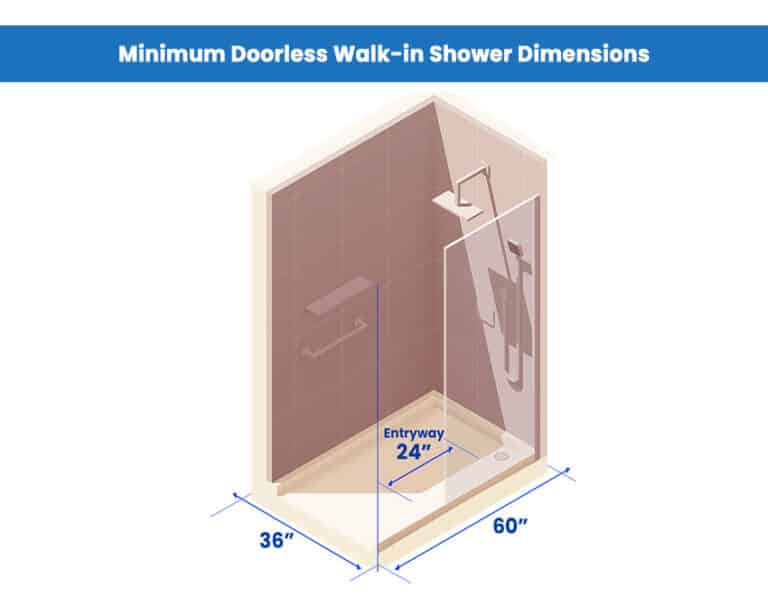Low Flow Toilet Pros And Cons
In this low flow toilet pros and cons guide you’ll see what it is, choosing low flow toilet, installation cost and whether this type of toilet is worth it.
 Toilets are a must-have for every home. Without them, we’d still be living in medieval and primitive times where bodily wastes aren’t properly and hygienically managed. They’re more than just bathroom appliances and they literally do our dirty work. Unfortunately, they can use up a lot of water in the process.
Toilets are a must-have for every home. Without them, we’d still be living in medieval and primitive times where bodily wastes aren’t properly and hygienically managed. They’re more than just bathroom appliances and they literally do our dirty work. Unfortunately, they can use up a lot of water in the process.
When there are droughts and other similar water shortages, they can easily drain out one of life’s most valuable commodities: water. It’s been said that toilets take up much of the water consumption in our homes – up to 14 percent.
They say that in some households, it can even go up to as much as 38 percent if we aren’t careful of our usage. This is why low flow toilets were introduced in the US back in as early as 1992. Here’s everything we need to know about low flow toilets. [toc]
What Is A Low Flow Toilet?
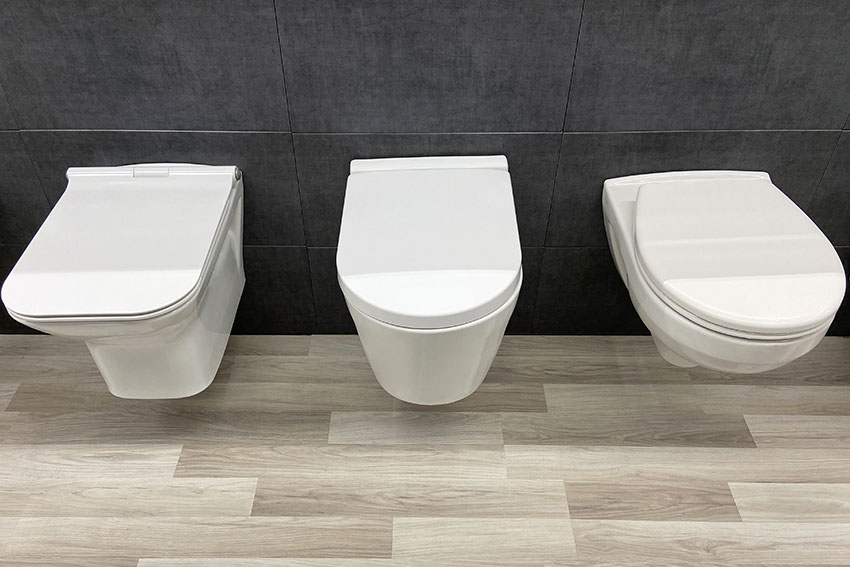
A low flow toilet, on the other hand, will only consume 1.6 gallons or 6 liters of water per flush or even lower than that. A majority of low flow toilets use pressure or gravity-assisted technology. These technologies make it possible to still efficiently flush wastes down without excessive use of water in the process.
They say that when you switch from a regular toilet to a low flow toilet, you reduce your water consumption by as much as 50 percent. That’s a huge amount of savings and water conservation effort by any account.
Low flow toilets are known to have replaceable and durable moving parts. They also come with state-of-the-art hydraulics for the tanks and bowls for a much improved water flow.
Low flow toilets are oftentimes also nicknamed as ULFTs or ultra low flow toilets. And they come in 2 varieties: gravity assisted and pressure assisted models.
Gravity assisted low flow toilets – They clear waste by utilizing the natural laws of gravity. When water and the flapper is released, the waste is cleared when water is forcefully dropped from the tank, initiating the flushing function. This ultimately drives and clears the waste out of the bowl.
Pressure assisted low flow toilets – These toilets work a little differently from the gravity assisted ones. How they work is that they compress a pocket of air during the flush. What this does is that it charges the water that’s released into the bowl. It’s much more expensive and much noisier compared to the gravity assisted models by up to as much as 50 percent more.
HETs or high efficiency toilets – And with all the innovations in technology, a third model has been introduced: the high efficiency toilet. This type of toilet consumes 20 percent less water compared to their low flow toilet counterparts. They consume only 1.28 gallons or 4.8 liters per flush.
They also have a dual flush function wherein there’s a specific flush button you use for liquid waste and another one for solid waste. They are generally gravity fed. The liquid waste button only consumes 0.8 gallons or 3 liters of water per flush.
Choosing A Low Flow Toilet
If you are currently in the process of shopping around for a low flow toilet upgrade, there are three things you need to keep in consideration: the waste removal function, how much noise it generates, and its overall design.
As a little more background on why the toilet bowl design matters, it’s important to know that bowls that are about an inch and a half taller than the standard ones have been known to clear waste better and more efficiently.
This is due to the fact that the water is given more leeway. It has more distance to fall which increases its opportunity to clear waste in the process. Round shaped bowls are also better than angular ones as they’re smaller.
Low Flow Toilet Pros
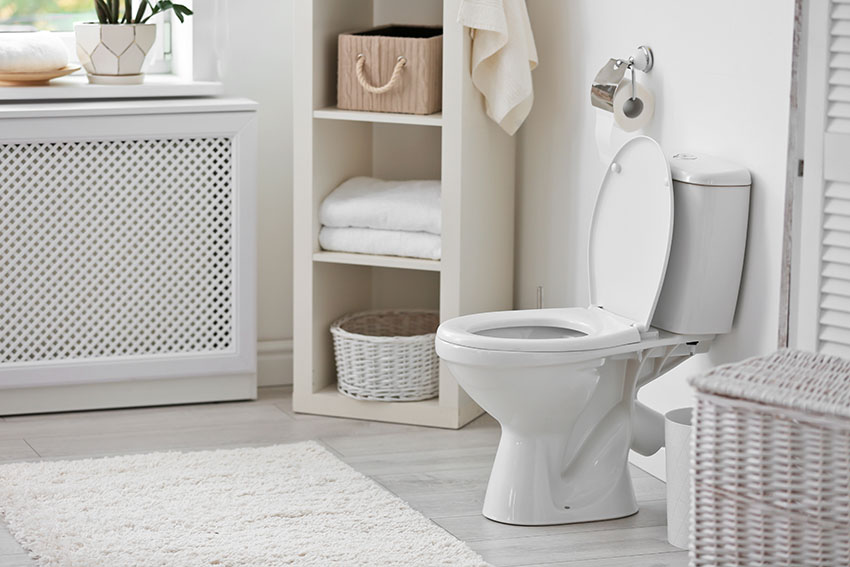
They’re environmentally friendly. If the purpose is for you to conserve water or to at least lessen your water consumption, the bathroom is the best place to start at home. Like we’ve previously mentioned, your toilet accounts for 30 to 50 percent of your total water consumption at home month after month.
Areas that suffer from seasonal droughts must have major water conservation efforts done at home and getting low flow toilets is one of the major moves you can make. Hence, they are more environmentally friendly.
They have lower operating costs. Because low flow toilets help you minimize your water consumption, this technically means that you also get to significantly bring down your water bills in the process. This is a considerable amount of money saved when you calculate how much cost you will be able to lessen month after month and year after year.
They have designs that save space. Low flow toilets have considerably smaller water tanks because of the fact that they consume less water per flush. This means that they will be able to fit in to smaller spaces much better. If you have a larger bathroom, the overall appearance is much sleeker and less clunky.
Low Flow Toilet Cons
As great as low flow toilets are, they definitely come with some considerable disadvantages that you also need to keep in consideration:
It’s expensive or costs more than regular standard toilets. Low flow toilets will definitely cost more upfront compared to standard or regular toilets. However, the cost difference is usually something that you can make up for when it comes to your water savings.
There may be a certain timeline for the return of investment but you can be quite rest assured that it’s definitely coming one way or the other. For Watersense low flow toilet models, they usually come with rebates which can reduce your upfront cost for the toilet when you purchase it.
It is more prone to solid waste clogs. Low flow toilets use less water. That’s a given fact. However, because of this particular function, it makes it more prone for solid wastes to end up being stuck something in the drain or in the toilet.
This can be true for clogs that oftentimes go unnoticed. This is usually commonly seen for homes that have extremely low water pressure or homes that flush down their toilet paper. An easy solution to minimize this would be to throw your used toilet paper in the trash instead of flushing them down the drain.
It may have higher installation costs. Low flow toilets have specific requirements when it comes to how the pipes are angled and sloped. This may not always be compatible with the preexisting plumbing systems that older homes usually come with.
This may mean higher installation costs because you might need to retrofit your plumbing system so that it’s compatible with your low flow toilets.
Cost To Install Low Flow Toilet
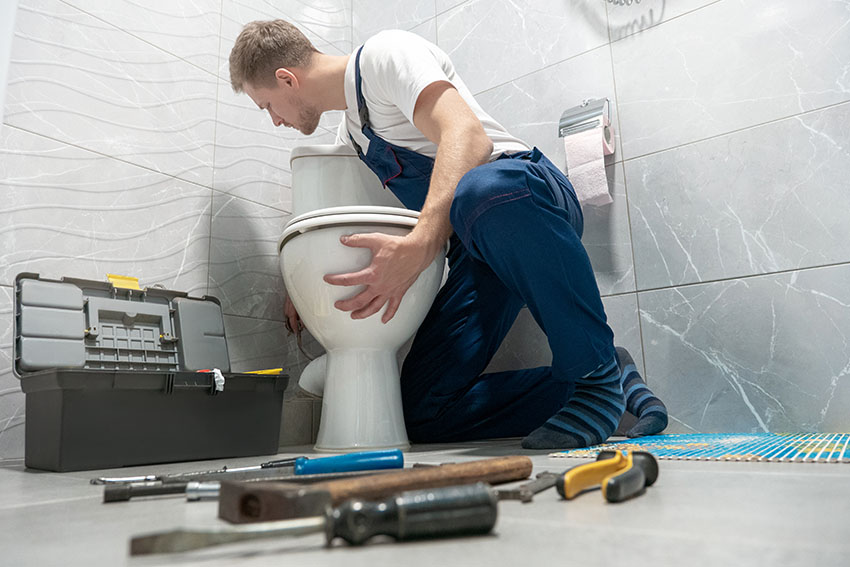
If you have an older home, your costs might end up being much higher as you would have to get your pipes and drains reconfigured. Low flush toilets have a specific requirement for how the pipes are angled or sloped.
There are a lot of things that can factor into the overall cost of getting your low flow toilet installed. For starters, you would need to consider your zip code or where you’re currently located in. labor may be standard, higher, or lower than normal depending on where you are currently residing.
If you want to get a more accurate breakdown of the installation cost, it would be best if you get in touch with a professional contractor. Oftentimes, they will be more than happy to get you a free assessment and a free quote in the process.
Now on to the actual cost of the low flow toilet. The cost can fluctuate depending on the distributor, as they may have their own unique margins of profit as well as overhead costs to maintain.
Fall and winter and usually the best seasons to get your new toilet as there are a lot of aggressive sales going on. This may be a good time for you to leverage those. Once you have an actual overall calculation, it would also be smart for you to put in an extra 15% or so for unexpected costs.
Are All New Toilets Low Flow
Technically speaking, the answer is a YES. All toilets that have been manufactured from 1992 and onwards are categorized as low flow toilets. This is because it has been mandated by US law.
This law was overwhelmingly passed and approved by Congress under the Energy Policy Act. In this act, new national water efficiency standards for faucets, shower heads, toilets, and so on, were set.
This went in effect on 1994. Since then, toilets that were sold did not exceed 1.6 gallons of water per flush; all under the low flow toilet category. So yes, all new toilets in the United States are technically low flow toilets.
Are Low Flow Toilets Good For Septic Systems
Yes they are. Using low flow toilets can definitely positively impact your septic system at home. One of the main causes of septic system failure is when excess water fills up the septic tank at unregulated rates or speeds.
It can take up a lot of money and time to get a septic system repaired or replaced. The concept is pretty simple. The more water you end up using, the quicker your septic tank fills up. This means that you would have to drain it out more frequently.
It makes sense to think that the less water you consume, the less strain you technically put your septic system at home under.
So yes, low flow toilets installed at home are definitely very good for your septic systems and for your overall home maintenance in the long run.
Best Toilet Paper For Low Flow Toilets

You need to make sure that you pair it up with toilet paper that easily dissolves. Take note that low flow toilets are quite prone to clogging and using hard-to-dissolve toilet paper can accelerate clogging and other possible issues not just in your toilet but in your septic tank as well.
When looking for a great toilet paper to use for low flow toilets, the main requirement to look for is dissolvability. Try to look for labels just as “recyclable” and “biodegradable”. They also tend to dissolve more quickly. Also try to steer clear from toilet papers that are chemically treated.
Chemicals such as solvents and bleach can disrupt the delicate chemical balance in your septic tank. It’s always safer to go for toilet paper that isn’t chemically treated. Of course, on top of this, you also have other factors to consider such as absorbability, softness, roll size, and strength.
Here are some of the best brands so far:
Cottonelle – The Ultra CleanClare variant is one-ply. It’s thin enough to break down easily but it’s still absorbent and soft enough to feel plush. And even if it’s single ply, it’s still strong enough to clean thoroughly and effectively without ruining your septic system. It’s also environmentally sourced.
Angel Soft – This brand perfectly balances out cost, effectiveness, and comfort all in one. This tissue brand is soft, flushable, and extremely safe for the septic tank.
Scott1000 – This is a very cost friendly toilet paper option. As the name says, it features 1000 sheets of toilet paper per roll. It may not be as plush or thick as the other toilet paper options but it breaks down easily and is absolutely clog free.
Do Low Flow Toilets Clog More Easily
Unfortunately, this is a considerable downside to getting low flow toilets. They do clog more easily. This is mainly because of the fact that they use considerably less later.
Solid wastes in particular could lack the pressure needed to go completely down the drain and this can cause clogs somewhere in the process.
Converting Low Flow Toilets To Regular Flow
Technically speaking, it’s not possible to convert a low flow toilet to a regular flow one. But there are things you can do to at least increase its flushing power. The gist is for you improve the water flow, making your low flow toilet perform better in the process.
You can raise your tank float. Look for the screw between the fill valve and the float. With the use of a screwdriver, insert it into the screw and slowly turn it. The more you turn the screw, the more the float will rise. You can stop turning it when it reaches your preferred height. This will allow higher water levels in the tank.
Adjust your cylinder float. They can usually be found in the center of the tank. Look for the thin adjustment stem, take hold of the release clip attached and pinch it lightly. This should raise the cylinder float. If this doesn’t work, you might need the help of a screwdriver. Make sure to turn it clockwise.
Clean the flush holes of the toilet. Flush holes in the toilet can get clogged up over time and with continual use. They are usually in charge of making sure that your bowl is filled up with water every time you flush it. You can do this with a strong acidic toilet bowl cleaner to unclog the holes. The more you regularly clean them, the more powerful and efficient your flushes will turn out to be.
Unclog your toilet. Every now and then, there may be mild clogs deep down your toilet drain. This can in turn affect the flushing power. With the use of a drain snake, Drano, plunger, or other similar tools, you can easily unclog your toilet. Knocking down any drainage blockages will exponentially improve your water flow and your flushes.
Are Low Flow Toilets Worth It
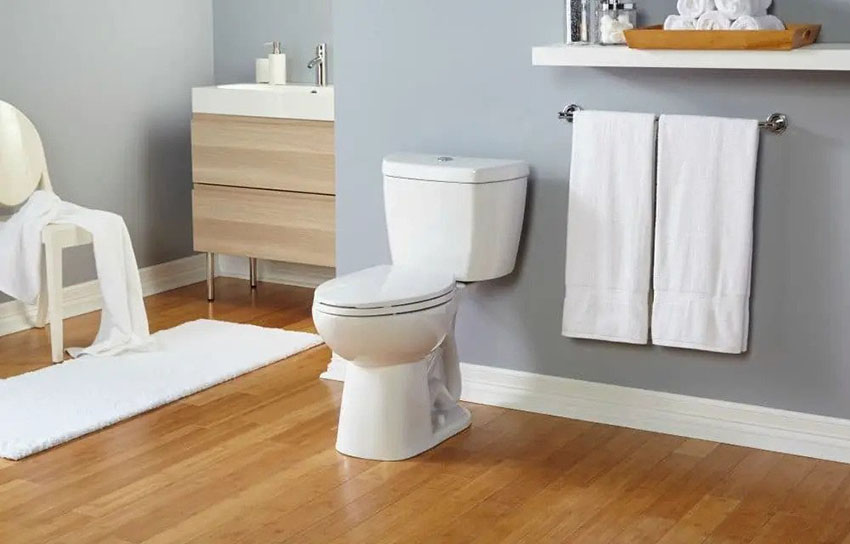
Low flow toilets are worth it. If you’re thinking of getting one installed, what you should know right off the bat is the fact that whatever costs you might have incurred, you could start recouping right away or almost immediately the moment that your low flow toilet is functional.
You get to save up to as much as 50% off of your water bills per month and this can stretch out for years. Low flow toilets are worth all the hype.
See more related content in our article about incinerating toilet pros and cons here.

